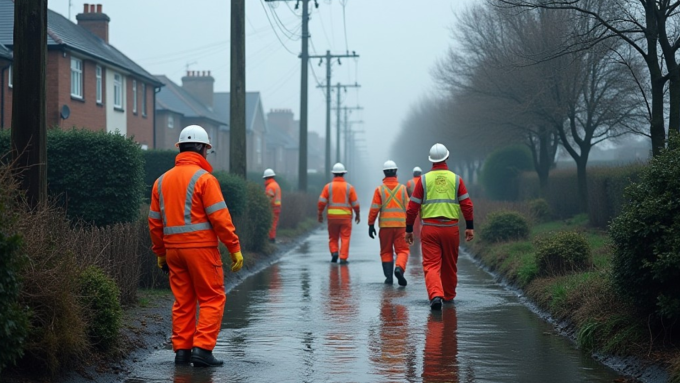
Zero emission ambition takes flight

Hydrogen fuelled aircraft are expected to enter service as early as 2025 according to Connected Places Catapult’s updated Roadmap for Zero Emission Flight Infrastructure, published in March.
It says the first flights will be commuter aircraft of up to 19 seats which feature retrofitted fuel cell propulsion systems. It is expected that regional aircraft of up to 100 seats will enter the market between 2030 and 2040.
The Roadmap points out that fixed infrastructure at airports will be required by 2030 to meet a rapid increase in hydrogen demand during the following decade. Infrastructure constructed in a scalable manner, it adds, will allow for increases in capacity with growing demand.
The launch of the Roadmap and two associated documents ‘Hydrogen infrastructure options for airports’ and a ‘Standards Action Plan’ – produced in association with industry experts – coincided with a summit hosted by Connected Places Catapult in London titled ‘Decarbonisation of Transport – Powering the Future of Mobility’.
The event was chaired by Connected Places Catapult’s Director of New Mobility Technologies, Henry Tse who said: “We predict that long haul operation airports will drive the largest liquid hydrogen demand, totalling approximately 1.8 million kilograms per airport per day by 2050. This is the scale of opportunity for infrastructure, energy and innovation providers.”

A fuel for the future
Delegates to the event heard from Cranfield Aerospace’s Chief Strategy Officer, Jenny Kavanagh, who said: “Hydrogen is a fuel for the future. What we are trying to do is start with small aircraft, and get those into service in a few years.”
Jenny went on to say that there needs to be more cross-industry collaboration to get standards in place. “We are missing the drive to encourage wider aviation collaboration; how to bring airports, airlines and others including the National Grid together. The Government cannot fund everything,” she added. “We need to tap into private investment markets.” An example of collaboration in practice at Cranfield can be seen here at their demonstration event as part of Zero Emission Flight Infrastructure.
Delegates were reminded that hydrogen powered flights are not a distant dream: January saw a 19 seater aircraft take to the skies in a trial carried out by ZeroAvia in Gloucestershire. The company’s Vice President of Infrastructure, Arnab Chatterjee said: “We are trying to show the art of the possible. Our first flight was two months ago; now we want to start to build conversations in other parts of Great Britain.”
Aviation Technology Innovation Lead, Andrew Chadwick said the sector needs to work together to develop the zero emission opportunity.
“We have got here by collaboration, not competition. There will be time for competition; but greater collaboration is key.”Aviation Technology Innovation Lead, Connected Places Catapult, Andrew Chadwick
Connected Places Catapult’s Systems Engineer, Kruti Joshi added: “Hydrogen flights are not just viable, but are coming much sooner than we expect them to.”
Ready for the challenge
Filton Systems Engineering’s Commercial Director, Ben Richardson was asked by Henry Tse if we are ready for the safe handling of hydrogen at airports. “Hydrogen has been around for decades,” replied Ben. “We know how to handle it and mitigate the risks. The challenge is how to scale that up.”
Airports Operators Association’s Policy Director, Christopher Snelling spoke of the need to “unpick uncertainty” around hydrogen and “give confidence to people to build momentum”. For him, producing detailed standards is vital. Airports, he added, are “incredibly safety-centric environments” and he explained that it is particularly important for operations staff to understand the process of delivering hydrogen safely and effectively.
The British Standards Institution’s Senior Standards Manager, Dawn Hunter added: “There is a real opportunity for the UK to be a testbed for initial standards development, and to take this forward internationally, led by BSI.”
Later in the day, the Catapult’s Chief Operating Officer, Rachel Gardner-Poole asked what infrastructure would be needed in the next five years to start supporting hydrogen flights. “To get things started at small airports you don’t need huge infrastructure,” said Jenny from Cranfield. “You just need a truck to start with to fuel these small aircraft.”
Gareth Williams of High Value Manufacturing Catapult then spoke about the Hydrogen Innovation Initiative which brings together a range of stakeholders to accelerate the sector. “Through investment in translational research and building UK supply chains for critical technologies, we can ensure the UK unlocks the full socio-economic benefits of the hydrogen economy,” he said.
Rounding off proceedings, Henry Tse remarked: “All of this discussion is crucial in setting the agenda for future actions. We cannot do this alone; it is important we continue to work together and create a sustainable ecosystem. We have an opportunity to make an impact.”





